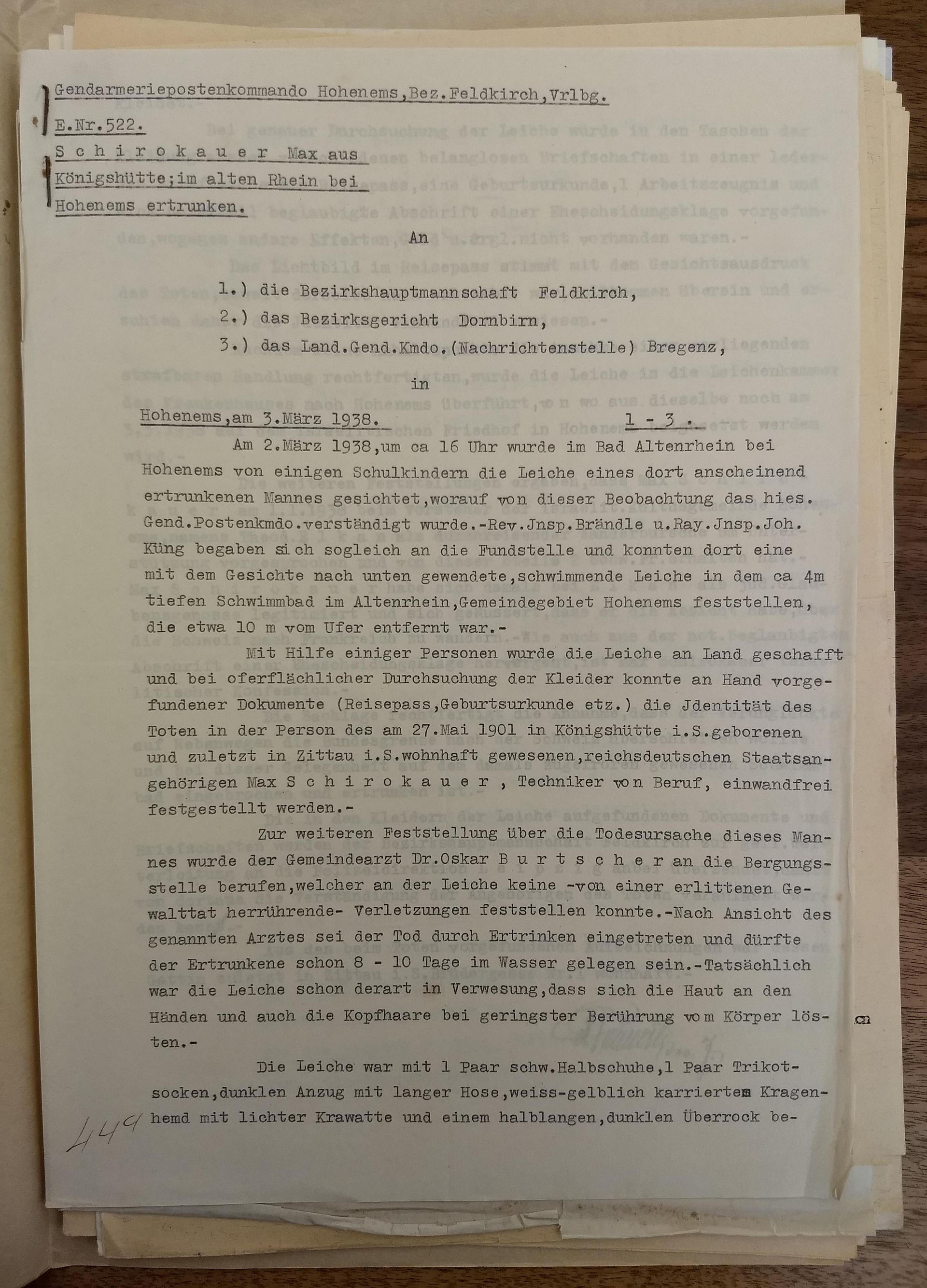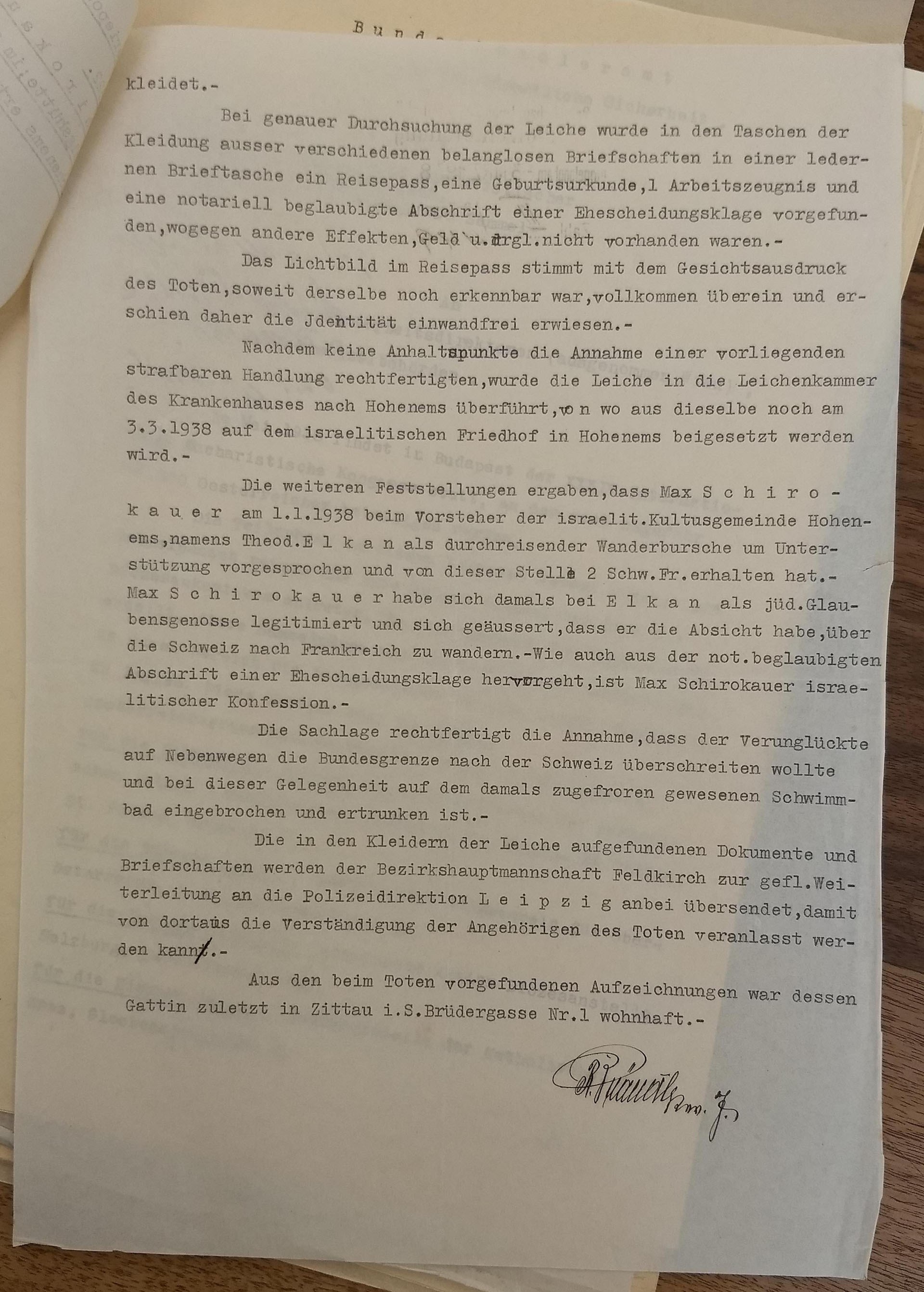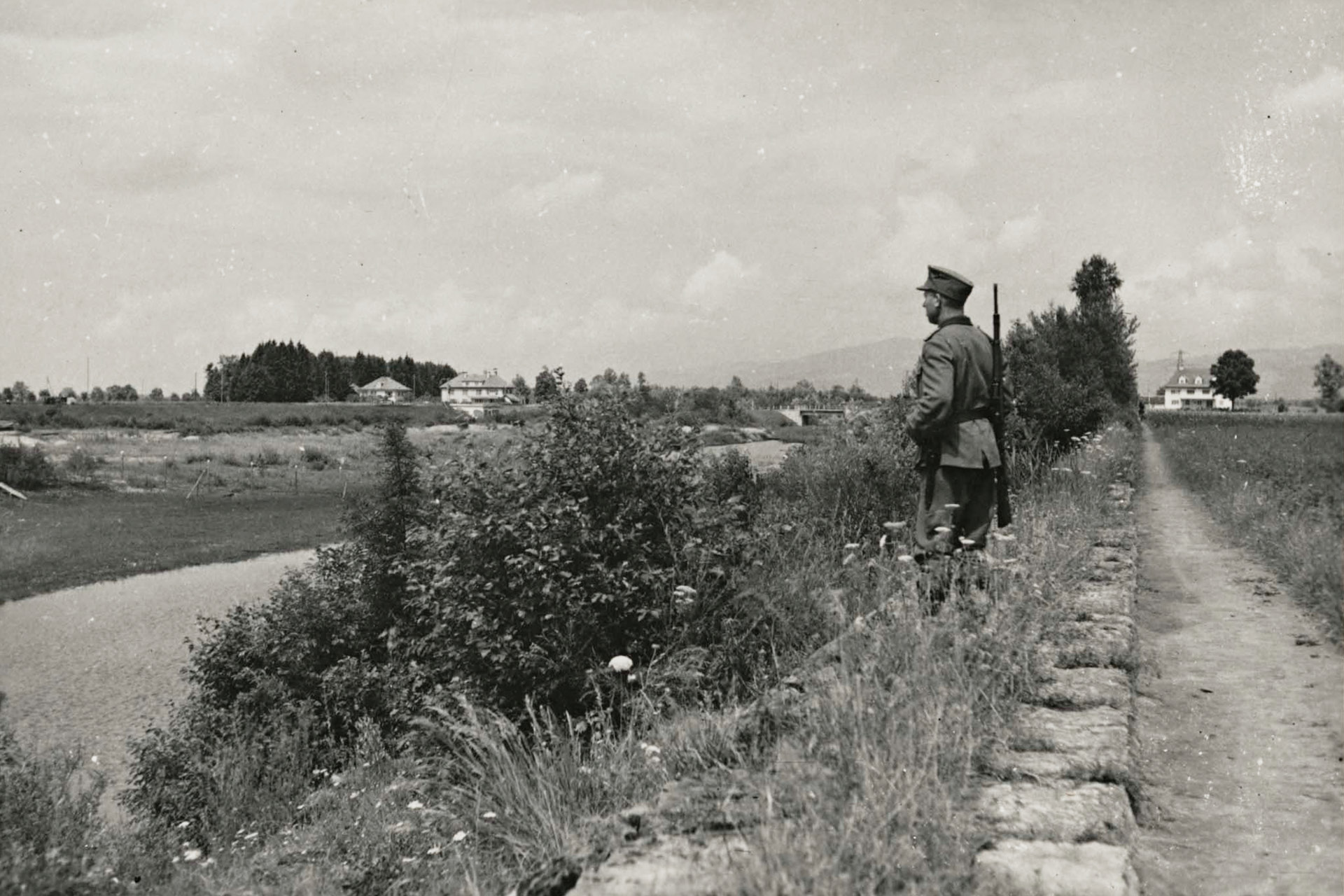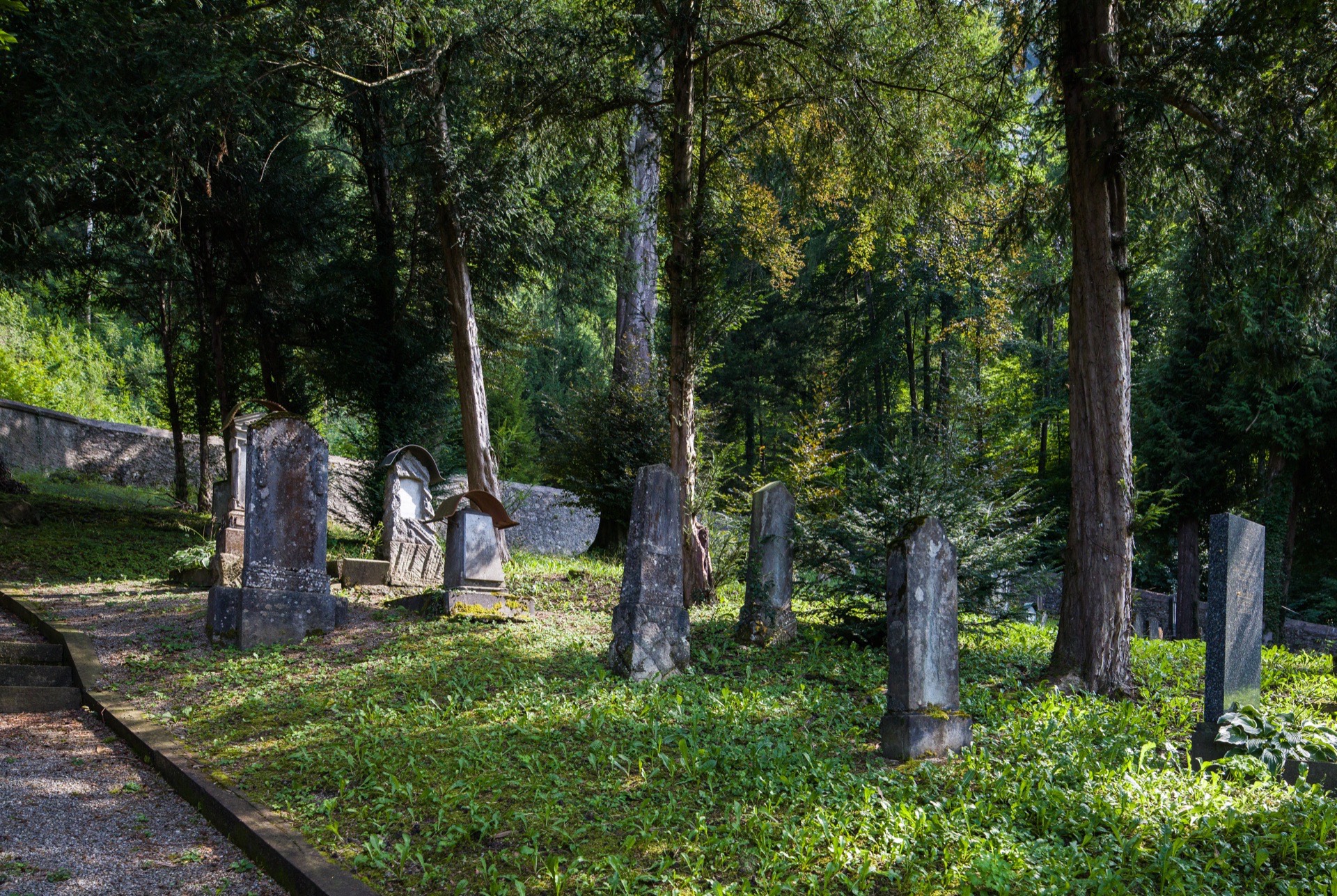28 Max Schirokauer> Februar 1938
Text einblenden:
28 Max Schirokauer
Drowned in the Old Rhine: how Max Schirokauer ended up in the Hohenems Jewish Cemetery
Hohenems, February 1938
Report of the Hohenems Gendarmerie Post Command, Feldkirch District, Vorarlberg.
“On March 2, at about 4 p.m., the body of the man who had apparently drowned there was spotted in the Old Rhine near Hohenems by some schoolchildren, whereupon the local Gend(armerie) post command was notified of this observation.
Inspector Brändle and Inspector Johann Küng immediately went to the place where the body was found and were able to ascertain a floating corpse, turned face downward, in the approximately 4-meter-deep public pool in the Old Rhine, Hohenems municipality, about 10 meters from the river bank.”[1]
The Hohenems municipal physician Oskar Burtscher, who was called in, was unable to detect any injuries. However, the dead man could be identified on the basis of the papers he was carrying. Max Schirokauer, a technician by profession, must have attempted to cross the frozen Hohenems public bath into Switzerland about 10 days earlier and had apparently broken in and died.
As it turned out, Schirokauer was fleeing the German Reich. On January 1, he had presented himself to the head of the Jewish community, Theodor Elkan, and legitimized himself as a “Jewish fellow,” according to the police report. He wanted to escape to France via Switzerland.
One day after he was found dead in the Old Rhine, Max Schirokauer was buried in the Jewish cemetery in Hohenems, a few days before Austria's annexation to the German Reich.
The city archives in Zittau, where Schirokauer is said to have lived, have information about him that he was born in Silesia in 1901 as the son of the Jewish factory owner Emmanuel Schirokauer and his wife Luise. In 1933, he married the acrobat Christine René Emma Grischek in Zittau. She came from a Czechoslovak family of acrobats who also lived in the small Saxon town at the time. Among the few things Schirokauer carried with him at the end of his life were his passport, a birth certificate, and a work certificate, as well as “various trivial correspondence” (as the police report notes), and a notarized copy of a divorce petition. Max Schirokauer had no money with him.
[1] Report of the Gendarmerie post command Hohenems to the District authority in Feldkirch, as well as to the District court Dornbirn and the State Gendarmerie command in Bregenz, 3.3.1938. VLA, Bregenz.


Report of the Gendarmerie post command Hohenems, March 3, 1938
Archiv der Bezirkshauptmannschaft Feldkirch, Vorarlberger Landesarchiv
28 Max Schirokauer
Drowned in the Old Rhine: how Max Schirokauer ended up in the Hohenems Jewish Cemetery
Hohenems, February 1938
Report of the Hohenems Gendarmerie Post Command, Feldkirch District, Vorarlberg.
“On March 2, at about 4 p.m., the body of the man who had apparently drowned there was spotted in the Old Rhine near Hohenems by some schoolchildren, whereupon the local Gend(armerie) post command was notified of this observation.
Inspector Brändle and Inspector Johann Küng immediately went to the place where the body was found and were able to ascertain a floating corpse, turned face downward, in the approximately 4-meter-deep public pool in the Old Rhine, Hohenems municipality, about 10 meters from the river bank.”[1]
The Hohenems municipal physician Oskar Burtscher, who was called in, was unable to detect any injuries. However, the dead man could be identified on the basis of the papers he was carrying. Max Schirokauer, a technician by profession, must have attempted to cross the frozen Hohenems public bath into Switzerland about 10 days earlier and had apparently broken in and died.
As it turned out, Schirokauer was fleeing the German Reich. On January 1, he had presented himself to the head of the Jewish community, Theodor Elkan, and legitimized himself as a “Jewish fellow,” according to the police report. He wanted to escape to France via Switzerland.
One day after he was found dead in the Old Rhine, Max Schirokauer was buried in the Jewish cemetery in Hohenems, a few days before Austria's annexation to the German Reich.
The city archives in Zittau, where Schirokauer is said to have lived, have information about him that he was born in Silesia in 1901 as the son of the Jewish factory owner Emmanuel Schirokauer and his wife Luise. In 1933, he married the acrobat Christine René Emma Grischek in Zittau. She came from a Czechoslovak family of acrobats who also lived in the small Saxon town at the time. Among the few things Schirokauer carried with him at the end of his life were his passport, a birth certificate, and a work certificate, as well as “various trivial correspondence” (as the police report notes), and a notarized copy of a divorce petition. Max Schirokauer had no money with him.
[1] Report of the Gendarmerie post command Hohenems to the District authority in Feldkirch, as well as to the District court Dornbirn and the State Gendarmerie command in Bregenz, 3.3.1938. VLA, Bregenz.




